Gaeng liang is a Thai vegetable soup beloved by health fanatics and flavour chasers alike. This popular dish is spicy from both chillies and peppercorns, umami-bold from fermented ingredients, and herbal from grachai (fingerroot) and lemon basil. This vegan gaeng liang recipe is very easy to make, so long as you have access to the key ingredient: lemon basil.
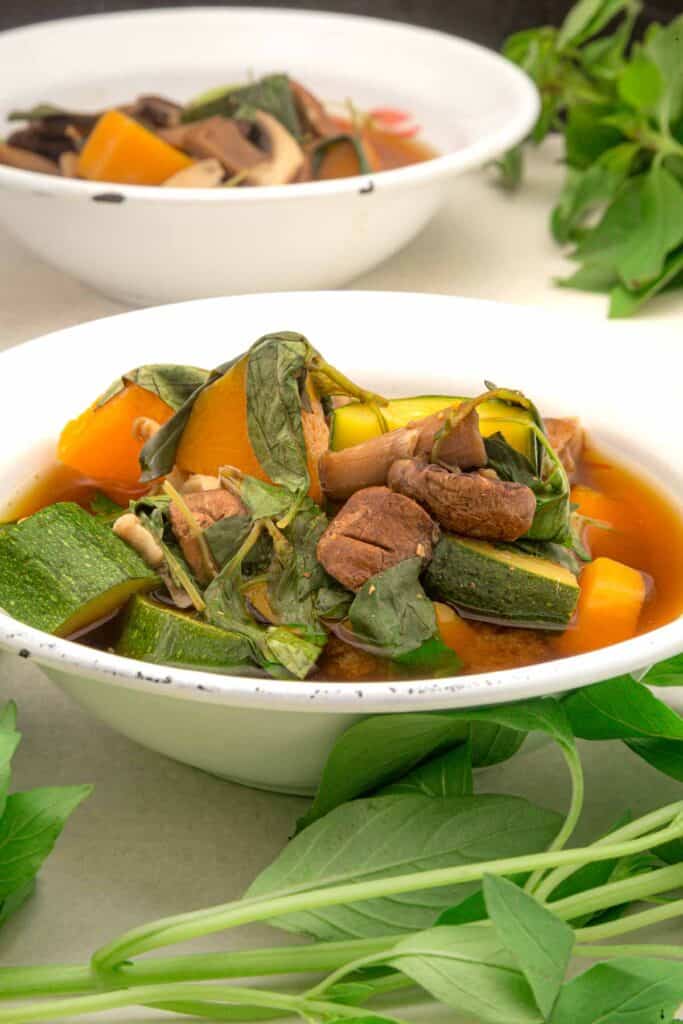
I first tried gaeng liang at one of my favourite restaurants in Bangkok, and haven't been able to shake the memory of the flavour since. After bemoaning the difficulties of sourcing lemon basil (maenglak, hairy basil, hoary basil) in England, the Thai friend I was dining with flipped quickly through the menu as if looking for something specific. When he reached the page he was looking for, a smile spread across his face he and asked “have you had kaeng liang?”
Gaeng liang is a peppery herbal soup that can be made with any vegetables. While this sort of dish would be classed as a soup by many outside standards, within Thailand it’s considered a curry because the boiling liquid is seasoned with a curry paste. Most recipes call for pounding the solid ingredients into a paste before adding them to the boiling liquid, but I shortcut this by combining everything in a blender before boiling.
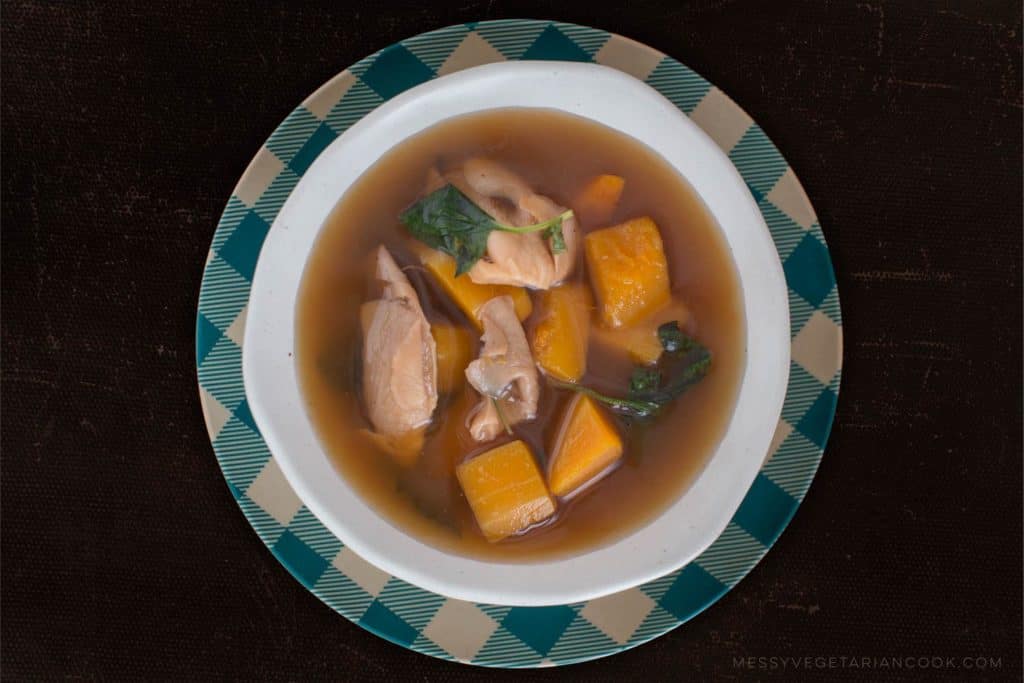
Without lemon basil this dish is irreplicable. I haven’t tried, but I reckon you could get away with using Vietnamese lemon balm as a substitute. Also, I’ve yet to experiment making this dish with Thai or holy basils, but I believe they would lend their own uniqueness to make a tasty soup even if it doesn’t resemble gaeng liang.
As far as the vegetables go, you’ve got plenty of options. Buuap liiam, or angled gourd, is a common ingredient but any type of gourd or courgette (zucchini) will do nicely. Cucumber is also good. You can also add corn kernels or baby corn. Carrots, spinach and other greens are also possibilities. I would personally never make this soup without some sort of pumpkin or squash. Pick 3-4 items and you should be fine.
If you live in central or East London, look no further than Khun Ya supermarket (closest tube: Bermondsey) for fresh Thai ingredients. This is the only place in London I have ever found fresh lemon basil for sale. You might find some luck with other online retailers. One reason shops don’t add it to their import lists is it doesn’t keep very well at all, so if you find it then plan to use it quickly.
📖 Recipe
Vegan gaeng liang (Thai vegetable soup with lemon basil)
Equipment
- Blender
Ingredients
- 1 litre water or unsalted stock
- 60 grams roughly chopped shallot heaped ⅓ cup
- 1 tablespoon vegan shrimp paste, Korean doenjang, or Thai fermented soybean paste See notes1
- 2 teaspoons chopped fingerroot (grachai)
- 12 white peppercorns
- 1-2 red bird’s eye chilies depending on heat preference
- 2 tablespoons Thai thin soy sauce See notes2
- ½ teaspoon mushroom seasoning granules (optional)
- ½ teaspoon salt
- 200-250 grams butternut squash or pumpkin, cut into 1 ½ inch pieces 2-ish cups
- 125-250 grams firm tofu, cut into 1 inch cubes ½-1 cup
- 150 grams courgette, cut into 1 ½ inch chunks 1 ½ cups
- 215 grams mixed mushrooms
- 20-25 grams lemon basil leaves 1 packed cup
Instructions
- Add around half the water, shallot, shrimp paste, fingerroot, white peppercorns, and chillies to a blender and liquidise until smooth. Pour into a saucepan along with the rest of the water and turn up the heat to high. Add the soy sauce, mushroom granules, and salt.
- Bring the soup to a rapid boil. As soon as it begins to boil, add the pumpkin and tofu.
- Boil for around 8 minutes, until the pumpkin is just or nearly cooked.
- Add the courgette and mushrooms. Cook for another 5-10 minutes, until everything is cooked to your liking.
- Turn off the heat and stir in the lemon basil. Taste for salt and adjust to your liking.
- Serve with steamed jasmine rice.
Notes
- To learn more about Thai soy sauces, see my Thai soy and seasoning sauce primer.
- To learn more about vegan shrimp paste and its substitutes see my post on vegan alternatives to shrimp paste. For information about Thai fermented soybean paste, see the aforementioned Thai soy and seasoning sauce primer.
This is an improved/updated recipe post.

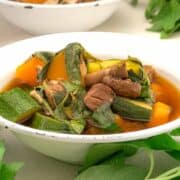
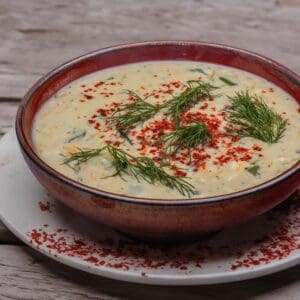

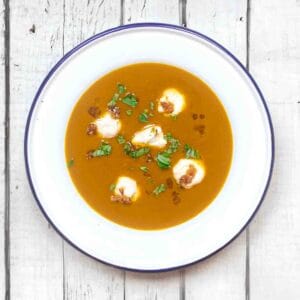
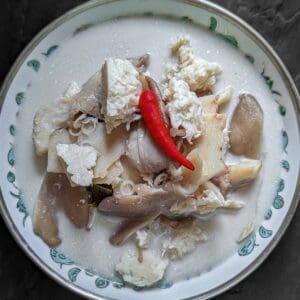
Leave a Reply